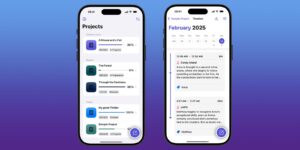Bonobos’ calls may be the closest thing to animal language we’ve seen

Bonobos, great apes related to us and chimpanzees that live in the Republic of Congo, communicate with vocal calls including peeps, hoots, yelps, grunts, and whistles. Now, a team of Swiss scientists led by Melissa Berthet, an evolutionary anthropologist at the University of Zurich, discovered bonobos can combine these basic sounds into larger semantic structures. In these communications, meaning is something more than just a sum of individual calls—a trait known as non-trivial compositionality, which we once thought was uniquely human.
To do this, Berthet and her colleagues built a database of 700 bonobo calls and deciphered them using methods drawn from distributional semantics, the methodology we’ve relied on in reconstructing long-lost languages like Etruscan or Rongorongo. For the first time, we have a glimpse into what bonobos mean when they call to each other in the wild.
Context is everything
The key idea behind distributional semantics is that when words appear in similar contexts, they tend to have similar meanings. To decipher an unknown language, you need to collect a large corpus of words and turn those words into vectors—mathematical representations that let you place them in a multidimensional semantic space. The second thing you need is context data, which tells you the circumstances in which these words were used (that gets vectorized, too). When you map your word vectors onto context vectors in this multidimensional space, what usually happens is that words with similar meaning end up close to each other. Berthet and her colleagues wanted to apply the same trick to bonobos’ calls. That seemed straightforward at first glance, but proved painfully hard to execute.


